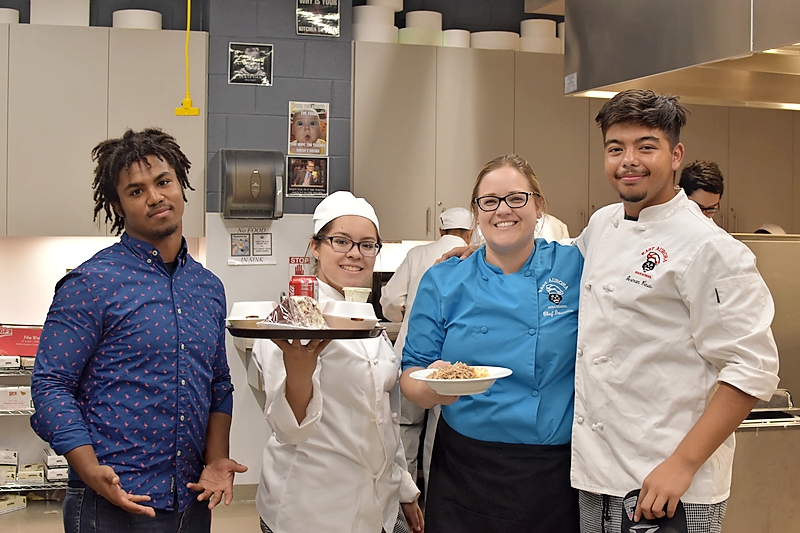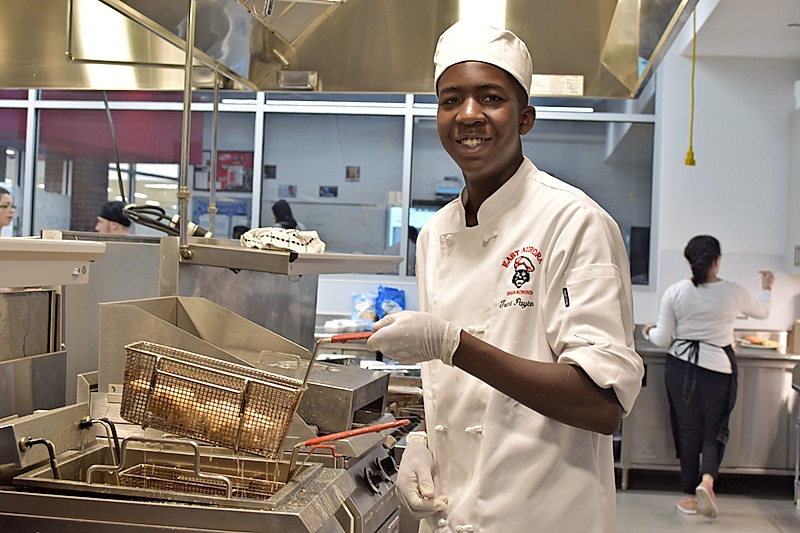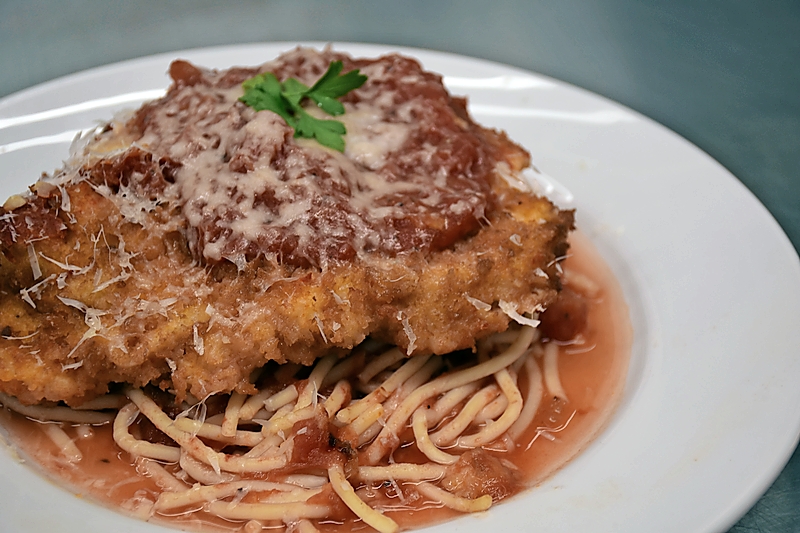Resident chefs
By Lisa Arnett
August 2019 View more Table for Two

East Aurora High School 2019 grad Joseline Carbajal, 18, became interested in cooking the same way many teens these days do: “I used to watch a lot of Food Network,” he admits. Unlike most of his peers, however, he’s had the opportunity to compete in cooking challenges and even help run a mock restaurant—much like Restaurant Wars on Top Chef—all through the school’s culinary arts classes.
Students who have completed two semester-long courses in culinary arts can sign up for Kristin Doucette’s yearlong restaurant management class, offered in two levels. One of the classes’ ongoing projects is operating a mock restaurant called the Iron Paw, open about twice a month during the school year.
The students are in charge of all aspects of restaurant service. “They will write the menu out. They will cost the menu out. They make a grocery list,” says Doucette, who has taught at East Aurora for 14 years. “They do the spec sheets on what has to be done. They run the front of house and back of house. Soup to nuts.”

The Iron Paw was run out of the home economics kitchen up until two years ago, when the school upgraded its facilities to include a commercial-grade kitchen space. Now the students prepare meals there and set up the adjoining classroom as a dining room, complete with themed decorations and table centerpieces. For a Mexican theme, they strung up traditional papel picado banners; for a carnival-inspired menu of pizza, burgers, and funnel cakes, they set up a table with games and popcorn for guests to snack on while awaiting their orders.
Faculty, staff, and parents book a daytime time slot for carryout or dine-in meals, and select their desired menu items, which allows the students to manage who is coming when and what they have ordered.
German Casas, 17, participated in the Iron Paw the past two years. “I started off being a cook … and then eventually I became back-of-the-house manager, overseeing all the orders and all the chefs,” he says. “I would tell my mom [to come dine] and she said she loves the food.”
Meanwhile, Bryanna Perez, 16, took a front-of-house management role and trained fellow students on how to use the cash register. “When the Restaurant Management 1 students come in, I explain to them, this is what you do,” she says. “I feel like now if I was ever to work in a restaurant, I would be more prepared. It would benefit me career-wise, as I know I’m learning the basics here.”

In addition to technical cooking skills, students learn the art of thinking on their feet. “There were times you had to come up with something on the spot,” Carbajal says. “Like, OK, we’re running out of this, what can we do to substitute it or change it up?”
Whether or not her students go on to pursue culinary careers, Doucette hopes they will put the skills they learned in her classes to good use. “Hopefully these kids are not going to be eating ramen noodles when they go to college, or eating from a microwave every single day,” she says. “Even if they’re not using my direct culinary skills, I’m teaching them … the basics of teamwork and working together toward an end result. I believe culinary arts is not just cooking.”


